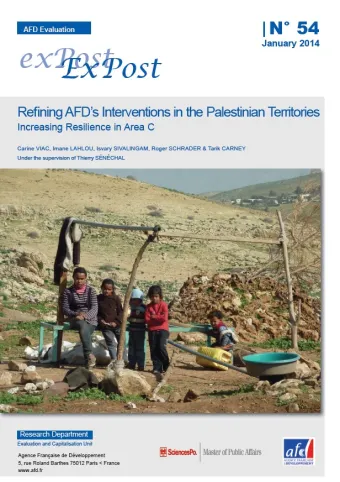Share the page
Refining AFD’s Interventions in the Palestinian Territories - Increasing Resilience in Area C
Published on

Zone C in the West Bank is a territory rich in natural resources and with great potential for economic development. It is also the only part of the West Bank over which the Palestinian Authority has no administrative control, nor a mandate to follow security issues that remain the responsibility of Israel. The difficult living conditions threaten the preservation of wealth, lifestyle, and especially the presence of Palestinian communities in this territory. In recent years, the Palestinian Authority and international actors have paid increasing attention to Area C, considered essential to ensure the contiguity and durability of a two-state solution.
In this context, a capitalization work was launched at the end of 2012 by the Mediterranean and Middle East (orient) Department and the Evaluation Division to inform and refine AFD's intervention strategy in Area C. Two key issues are addressed in this report: what are the priority needs in zone C? What approaches and methods of intervention would AFD gain from deploying to meet them? The study reviews the different intervention models existing in zone C, and describes their relevance and feasibility for AFD.
This study was conducted by a team of students from Sciences Po Paris' Master of Public Affairs, as part of AFD's partnership with the National Foundation for Political Science.
Useful Information
-
Authors
-
Carine VIAC, Imane LAHLOU, Isvary SIVALINGAM, Roger SCHRADER, Tarik CARNEY
-
Edition
-
54
-
Number of pages
-
76
-
ISSN
-
1962-9761
-
Collection
-
ExPost Evaluation
